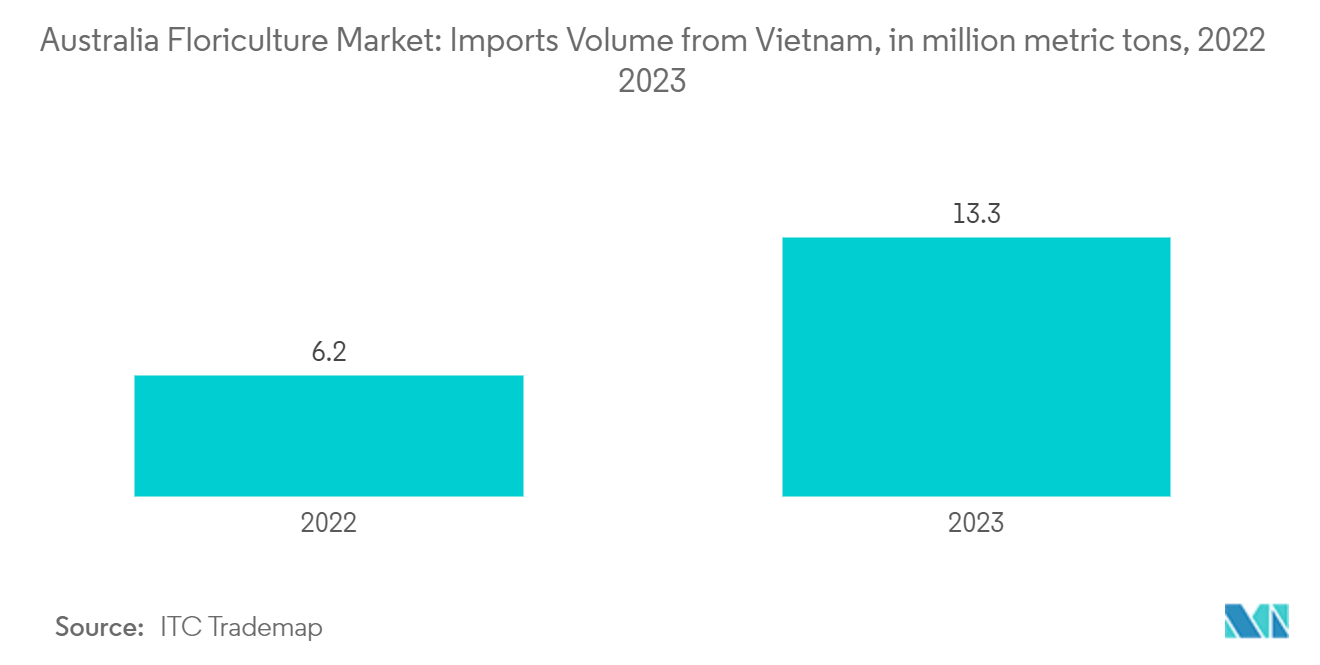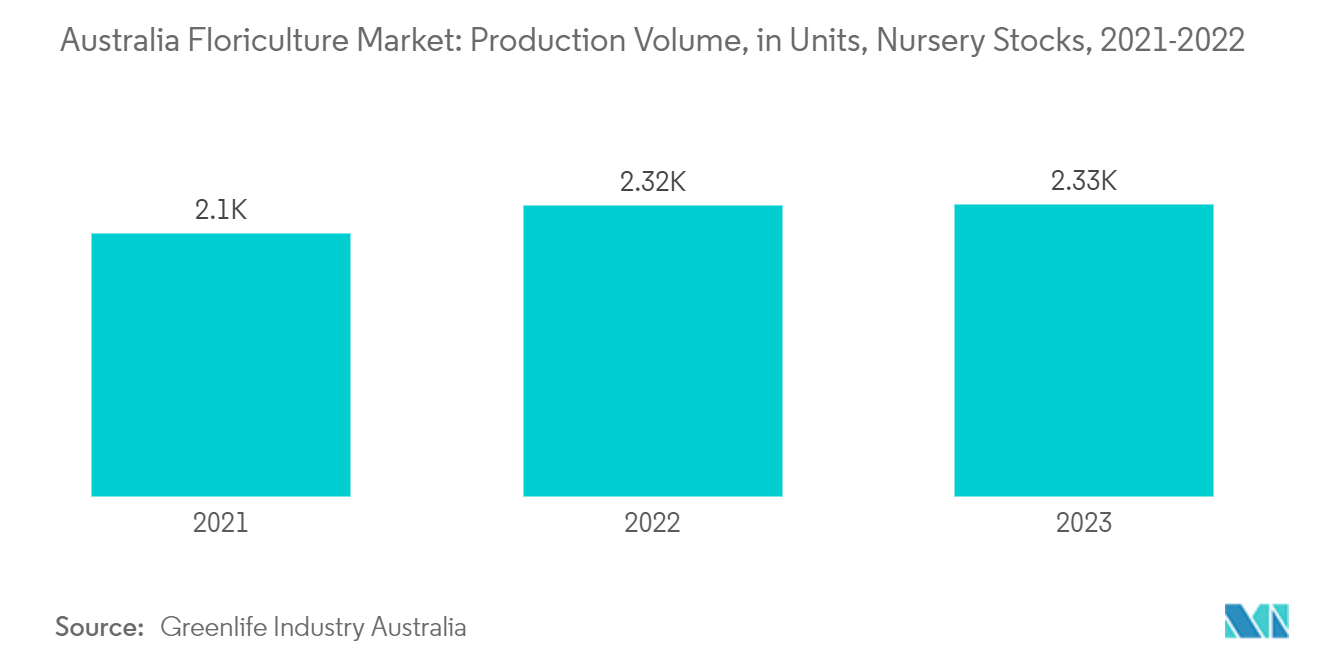Market Trends of Australia Floriculture Industry
The Demand for Cut Flowers is Growing
- Cut flowers are woven into the fabric of the culture, playing a pivotal role in traditions, celebrations, and everyday life in Australia. They are majorly grown in Victoria, Western Australia, and Queensland. They are central to many cultural and social events. The rising trend of using floral arrangements for home decor has further boosted the demand for cut flowers. However, despite this growing interest, Australia has witnessed a decline in flower production. According to the Australian Bureau of Statistics, the production value of cut flowers in Australia fell from USD 218.2 million in 2022 to USD 204.7 million in 2023.
- Despite the declining domestic cut flower production, the local demand is growing, thus increasing the country’s reliance on imports from various countries such as Malaysia, Vietnam, Kenya, and China. According to the Flowers Association, imports of cut flowers from Vietnam to Australia surged from 6.2 million metric tons in 2022 to 13.3 million metric tons in 2023. This uptick in imports underscores the robust demand for cut flowers in Australia, which may further boost the market’s growth during the forecast period.
- Companies in the market are rolling out new flower varieties, spurring an uptick in cut flower purchases across the nation. For instance, in 2022, Helix Australia debuted the Chamelaucium, commonly known as the waxflower, a quintessential filler in the cut flower arena. These novel waxflower variants enhance the beauty and texture of bouquets, thus boosting their demand and leading to market expansion.

The Nursery Stocks Segment Dominates the Market
- In Australia, nursery stocks encompass a variety of plants, including trees, shrubs, vines, buds, and annual flowering plants, all cultivated for sale and distribution. While production spans all states and territories, the majority is concentrated in Victoria, Queensland, and New South Wales. These plants are available throughout the year, but sales peak in spring, particularly for ornamental retail lines. Australian nursery stock production employs three distinct farming systems, where conventional systems contribute to 83% of the production value, followed by glasshouses with 13% and polyhouses and tunnels with 4%.
- In Australia, gardening continues to be a favored pastime, fueling a steady demand for nursery stocks. Garden enthusiasts are always on the lookout for diverse plants, whether for home gardens, landscaping, or indoor decoration. This heightened interest bolsters the gardening retail industry and propels the growth of nursery stocks.
- According to the Australian Bureau of Statistics, Australia is home to 2,492 active garden supplies retail businesses. The rising demand for nursery stocks also bolstered their production in the country during the study period. For instance, according to Greenlife Industry Australia and Hort Innovation, nursery stock production increased from 2,100 units in 2020 to 2,334 units in 2022. This uptick in production meets local demand, thereby reinforcing the market.


